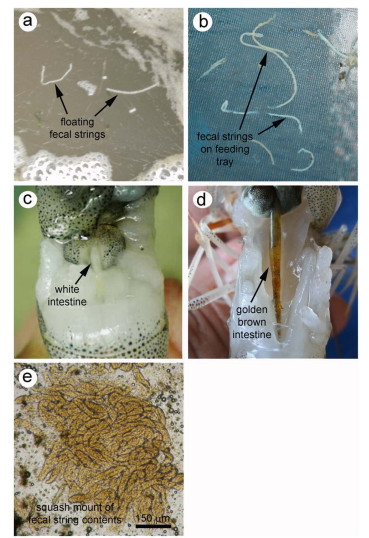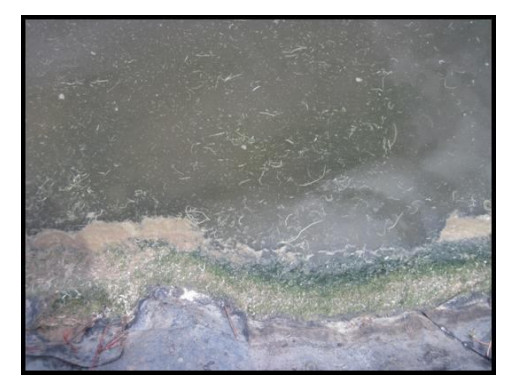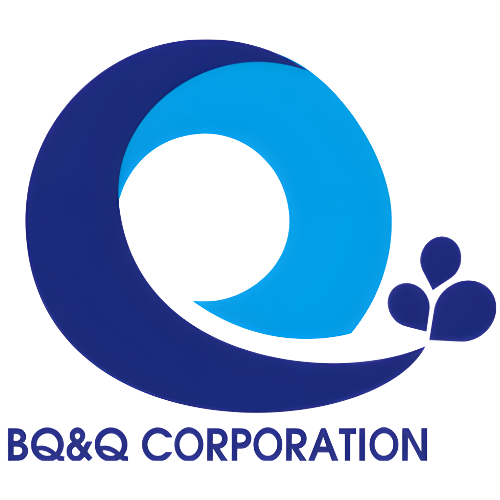Although farmers have reported seeing white feces (WFS) on and off for many years, it has only been in the last decade that it has been associated with acute disease. The exact cause of the syndrome has yet to be determined. There are some reports that claim that WFS is caused by vibrios, although there are some inconsistencies that suggest while they may play a role, it is unclear which species are involved. Some published papers claim that a microsporidian, known to widely infect farmed shrimp and responsible for poor growth and higher FCRs, Enterocytozoan hepatopenaei (EHP), is also responsible. This has become a ubiquitous pathogen as a result of poor biosecurity largely and as it is present most of the time without WFS would seem to suggest otherwise. There is evidence though that animals that have high levels of EHP and what is likely a presumptive pathogen (there could be more than one!) present display WFS. As with most of diseases that affect farmed shrimp there are likely multiple pathogens involved. A consistent feature of the disease is the widespread damage to the digestive system. The photos below show the typical appearance of the fecal strands (a and b) and macro (c and d) and microscopic pathology (e) as reported in Thailand in early 2010. Farmers had recently decided to boost stocking densities driven by
demand and stronger prices.

It was reported that water temperatures were at the upper end of the suggested optimum range for the shrimp, > 32 C, and organic matter levels had accumulated as a result of higher feeding rates because of the greater stocking densities. Other issues are certainly involved as it had been observed that at low DO levels (less than 3) and low alkalinitie
s (less than 80) mortalities were higher. WFS was first reported in P. monodon being reared at low salinities (3 to 5 ppt). It is now a serious problem affecting both “SPF” L. vannamei and P. monodon in India and elsewhere in SE Asia. Some persist in believing that gregarines are involved. The structures seen in photograph e, while reminiscent of gregarines, are not gregarines. Although a definitive etiology has yet to be universally agreed upon the presence of a number of toxigenic vibrio strains seems to be a consistent feature in the disease process and thus efforts to control the levels of the vibrios, primarily through biological means, will be critical for control. Interestingly enough antibiotics are not reported as being effective in stopping the disease process.
The evidence is strong that the disease is not due to the presence of high levels of gregarines or solely due to EHP. More than likely it is a result of high levels of organic matter allowing the growth of certain vibrio strains (or blue green algae or other toxigenic species that produce a toxin in a manner similar to EMS) that damages the animals digestive system. The white feces occur when the toxins damage the intestinal cell walls resulting in high levels of mucus secretion and sloughing of this material. This is seen as white fecal strands. Often the first sign of the disease is seen in feed or indicator trays although there can be considerable loads in the water as in the photo below
Note as in the photo below that there is an accumulation of blue green algae as well. This is a strong indicator that there is inadequate control of the levels of organics in the ponds.

The application of Bacillus based spore products has helped farmers (although not all products work the same) to control white feces. Field observations suggest that there is a strong relationship between the levels of accumulated organic matter in the ponds and the presence of WFS. The toxin load from the bacteria that cause EMS (and by extrapolation those that cause WFS) seems to be directly correlated with the amount of organic matter that has accumulated in the pond bottoms. Greater organic loads allow for more toxin production and the more toxin, the greater the impact on the animals. It is imperative that the farmers properly prepare ponds between cycles. They must let the pond bottoms recover by fallowing the ponds between cycles and letting the organic matter burn off in the sun or by physically removing it. Failure to address this results in a carry-over of organic matter between cycles, likely making the problem much worse. It is VERY important however to recognize that the production environment cannot be one where there are consistently high levels of stress on the animals. Successfully reducing the vibrio loads in the environment is only one element of control. Oxygen levels should always be at or near saturation. Low DO levels stress animals and regardless of the perception of the farmer, they weaken the animals and negatively impact their immune systems. It is foolish to throw away a crop by gambling that low DO events are not harmful. Growing animals at high temperatures, exposing them to sudden dramatic environmental shifts, etc. can all contribute to susceptibility. Our Bacillus products, available in a convenient tablet format (PRO4000X/PRO5000), a PowerPack that is thrown into the ponds (AQUAPRO EZ) and a powdered format for those that want to activate the material before it is used (AQUAPRO B) are field proven products used in most shrimp farming countries. Proper use will reduce the amount of organic matter, reduce some types of bacteria (such as vibrios) and improve water quality.
Start with a very even spread of the powdered product soaked in 50 liters of water per kg (ok to use tablets) for 3 hours using clean, bacteria free, water. As the pond is filling, disperse this mixture as uniformly as possible in those areas where organics accumulate and throughout the pond. The spores will germinate, and our proprietary strains through the production of a very powerful set of enzymes will degrade organics that might be present. I would also strongly encourage feeding the animals as well with the Bacillus spores. This can be done using AQUAPROB, milled into the feed or cultured (ONLY under appropriate conditions) and using this liquid suspension to top dress feeds. Consistent application of our products to the ponds is essential. Frequent applications at high rates are needed to ensure that organic loads are minimized. The same approaches that have been used to minimize the impact of EMS need to be employed. Allowing organic matter to accumulate is likely the underlying driver. Lined ponds never seem to be affected as well further solidifying the idea that the sediment is acting as the source of the cause of the problem. Without the ability to remove some of the accumulated organic matter (via sumps or pumped out) that occur in medium to high density production paradigms organic loads can build up faster than any bacterial additive can degrade. Animal health consists of many different components. Prevention of problems via the development and use of proactive management strategies is by far the best approach towards minimizing problems and maximizing profits. In an aquatic environment there can be many more challenges than in terrestrial environments. You want to create conditions in the water that are essential for minimizing stress, controlling pathogens and optimizing growth. Avoidance of pathogens by keeping them out of broodstock and taking proactive steps to ensure that PLs are not carrying pathogens are proactive steps that are essential for sustainability and ultimately to lessen the impact of diseases overall.
AQUAINTECH INC
www.aqua-in-tech.com,
www.sustainablegreenaquaculture.com



